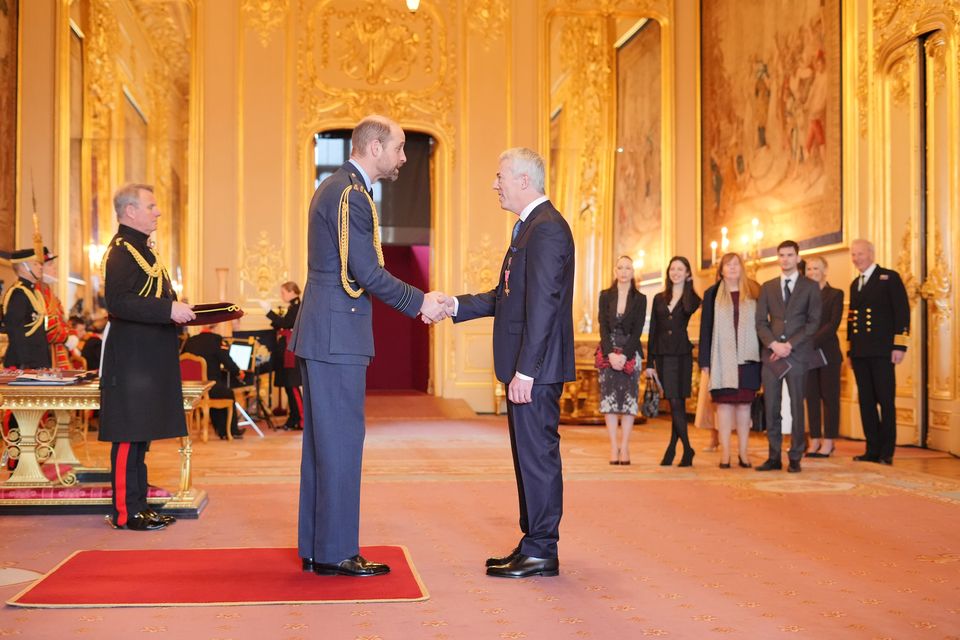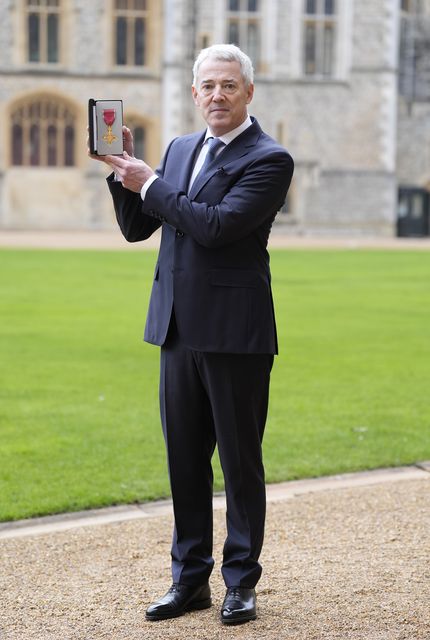A shipwreck hunter searching for the lost anchor of the HMT Empire Windrush said he wants to “highlight the story of pioneers” who helped create a multicultural Britain.
US-born David Mearns, 66, is leading a project on the seabed off the Algerian coast for the anchor of the ship, which brought Caribbean migrants to the UK in the 1940s.
Mr Mearns has located 29 major wrecks in a career spanning 35 years, including the 16th century ship The Esmeralda from Vasco da Gama’s fleet, and Ernest Shackleton’s Quest ship, which went down off the coast of Canada in 1922.
David Mearns, a marine scientist and oceanographer based in Midhurst, West Sussex, is made an Officer of the Order of the British Empire by the Prince of Wales at Windsor Castle for services to the location and recovery of historic shipwrecks (Jonathan Brady/PA)
Speaking at Windsor Castle after collecting an OBE for services to the location and recovery of historic shipwrecks, Mr Mearns told the PA news agency: “I choose to do ones that have the biggest impact on people, and I think to highlight the story of the pioneers who sailed on the Empire Windrush in 1948 is really historic.
“Directly, we can look at a milestone in our country that is the birth of a new Britain, a multicultural Britain.”
Mr Mearns, who has a background in oceanography and marine science, holds the world record for the deepest shipwreck ever found, the German blockade runner Rio Grande, which was lying at a depth of nearly 19,000ft.
The Sussex-based explorer also located the light aircraft carrying Argentinian footballer Emiliano Sala, which disappeared over the English Channel in 2019.
David Mearns, a marine scientist and oceanographer, after being made an Officer of the Order of the British Empire (OBE) by the Prince of Wales at an Investiture ceremony at Windsor Castle, Berkshire (Andrew Matthews/PA)
He said: “Each shipwreck has a different story, why it sank, the people in it, and they’re all very compelling stories.
“Sometimes when they’re lost, you don’t know exactly how that happened, and it allows us to retell that story using the films and the images of the shipwreck as the sort of vehicle for getting that message to people.
“Also, most people are fascinated by the ocean, but they don’t understand the deep ocean because it’s so dark you can’t see down there.
“And we illuminate the deep ocean, and we illuminate these shipwrecks and their stories using sonar and technology.”

